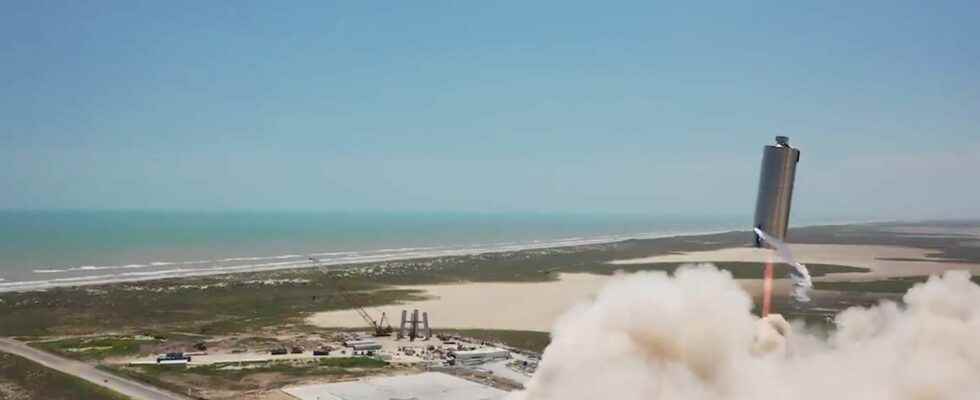SpaceX has decided to develop around twenty suborbital and space prototypes in order to carry out the Starshipits future all-purpose launcher whose commissioning is planned in “a few years” without further details from Elon Musk. This future all-purpose reusable transport system must, as soon as it is put into service, replace in a very short time, the entire current range of launchers and freight and manned transport systems of SpaceX. That is to say the Falcon Heavy and the Falcon 9used for launching satellites, refueling the international space station and crew rotation.
These prototypes are designed to test and validate the technological choices that will lead to the development of the main stage and the upper stage of this future launch system. In concrete terms, these prototypes test the different techniques of construction (assemblies, welds, resistance to pressurizations…) as well as the materials and alloys considered. They are also used to test the Raptor engines, very different from the Melin engines currently used on launchers Falcon 9 and Falcon Heavy. Unlike the Merlin used by the Falcon 9 and the Falcon Heavy and which works with a mixture of kerosene and liquid oxygen, the Raptor uses liquid oxygen and liquid methane, a mixture of propellants whose combustion is not completely under control. In addition, these prototypes are used to prepare future landing maneuvers.
Until the SN8 prototype, the machines built resembled a kind of flying canisters which had varying degrees of success. Some succeeded in their demonstration “flight” (can we speak of flight when it comes to climbing a few tens of meters high), while others exploded or imploded on the ground during the pressurization of the tanks or static tests. Failures which nevertheless help in the development of the Starship for the reason that in a period of development, failures are preferable to immediate successes because it is easier to see where the areas for improvement are while successes are likely to hide defects in design.
From 150 meters to 20 kilometers in altitude before reaching space
In August 2019, the first prototype Starhopper made its second and last test flight at 150 meters high. In November 2019, the MK1 prototype was badly damaged during a ground blast, making it unusable for testing. At the end of February 2020, the SN1 was destroyed during a test of pressure on the ground. In April, SN3 also exploded on the ground during an engine firing test, due to a pressurization fault. In May, SN4 also exploded after successfully carrying out two pressurization tests. Two successful flights will follow, those of SN5 (August 2020) and SN6 (September 2020) which rose to 150 meters from the ground before returning to land.
The next test flight is highly anticipated with the SN8 prototype whose appearance and objectives will be more ambitious and very different from previous tests. This prototype will be much larger, surmounted by a cone, and equipped with aerodynamic surfaces. It will be powered by three Raptor engines and will aim for an altitude of 20 kilometers. SN8 will be the first prototype equipped with fins, control surfaces, an aerodynamic cone, similar in size and shape to a space launch vehicle. The previous prototypes were above all akin to motorized cylinders surmounted for some of simulator of mass whose “flights” peaked at a few tens of meters in height.
As for the first orbital test flight, Elon Musk foresees it towards the end of the second half of 2021.
You will also be interested
Interested in what you just read?
